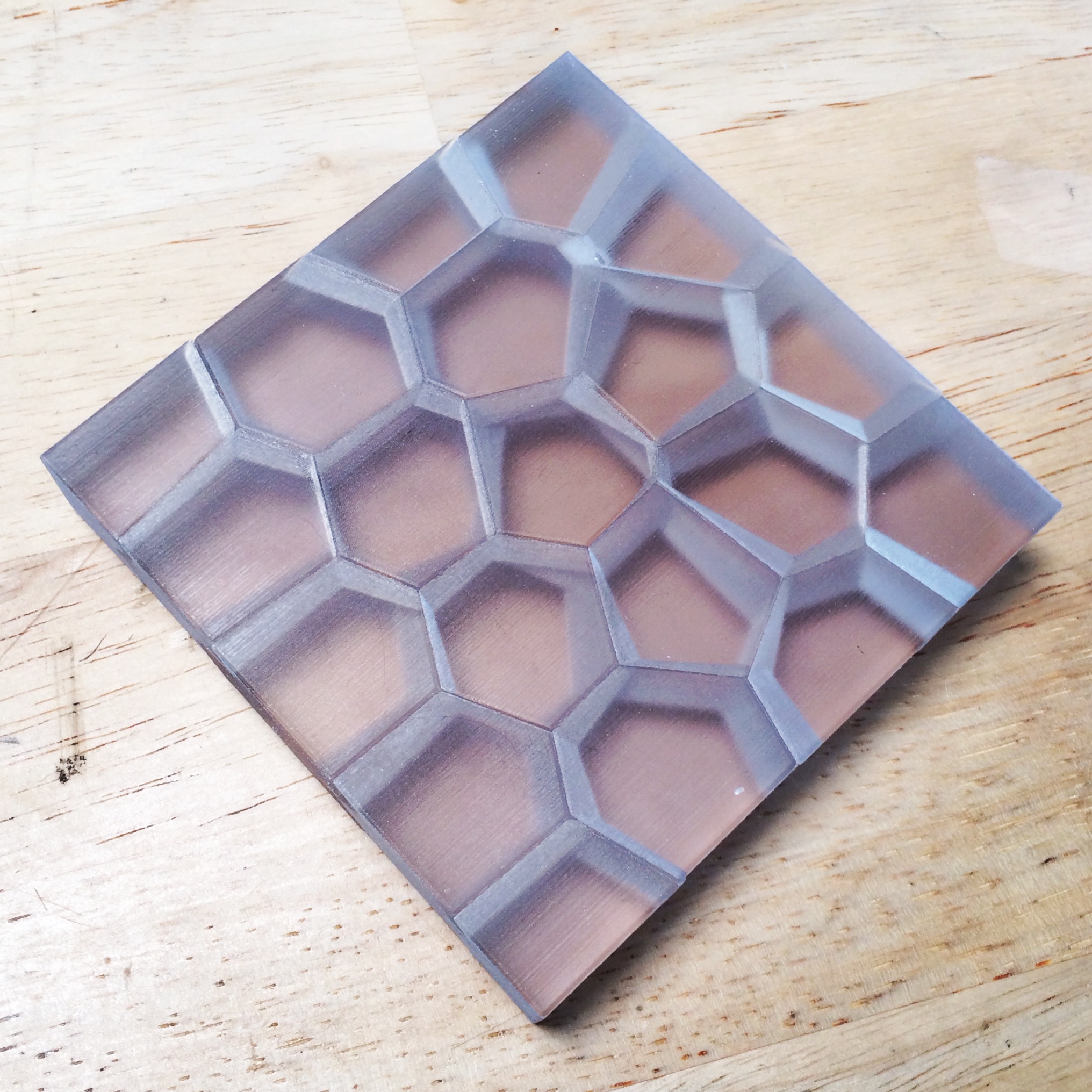Info: A Voronoi Puzzle is a physical 3D puzzle that one can put together like a normal puzzle. However, unlike a normal puzzle, each puzzle is unique and customizable because of the real-time generative design process used to make them (described below in Process). The puzzle is inspired by and relies on voronoi patterns, which are patterns found in nature (ex., soap bubbles, butterfly wings, giraffe spots, etc). The voronoi diagram has applications in economics, math, computational geometry and more. A "Voronoi Diagram", described by Other Machine Co, is
"... a mathematical method of dividing space into regions. Seed spots are spread along a field, and polygons are generated around these seed spots. The polygons are every point in space around a seed spot that are closer to that seed spot than any other."
The pieces in the puzzle are the individual cells in the [2D] voronoi diagram as they evolve over time. Each puzzle piece is a physical representation of the history of the cell as the seed spot for the cell moves over time. In a way, this puzzle is 4D because it encodes how the seed spots evolve over time and change the diagram / overall form. Check out the video below to see how the seed sites move and how that affects each cell.
Process: Each puzzle is unique and can be customized (# of seed sites aka puzzle pieces, width, height, depth, entropy, history length, etc). Reza wrote an application (C++, OpenGL, Openframeworks) that allowed him to study and visualize what happens when seed sites in the voronoi diagram move over time. (which is shown in the video above). Then Reza designed an interface (using ofxUI & ofxGenerative) that allowed him to control the parameters of the puzzle & physics of the seed site's movement (shown in the video below). The application allows anyone to customize their puzzle in real-time and take a "snapshot" of the design they like. This snapshot contains the 3D puzzle pieces and a MEL script. The MEL script is used (in Autodesk Maya) to create holes for magnets and space the puzzle evenly for 3D printing (Check out the video below to see the entire design process). For more information, check out the instructable.
Designer & Developer: Reza Ali
Output: 3D Prints & Custom Software (C++, openFrameworks)
Residency: Autodesk Pier 9
Year: 2014






















